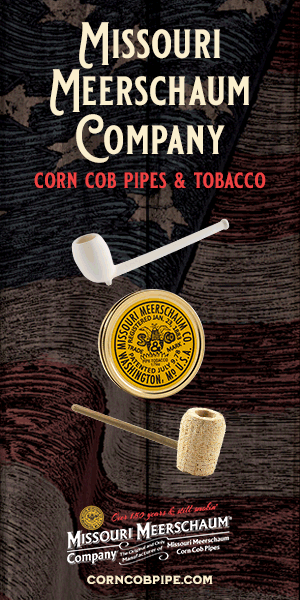A condensed history of Willard pipes:
Gang - Here's a Willard story I wrote that was published in the latest edition of The Pipe Collector:
Estate Pipes
By Dave Whitney
Willard, the Pipe That Went to War
A top bid of $55 on eBay for a Willard estate pipe I had listed in New Old Stock condition for $19.95 sent me scrambling to the research files a few months back to see just what fascination these rather plain-vanilla old pipes held.
There is not much information on them in the public domain.
Herb Wilczak and Tom Colwell didn’t list them in “Who Made That Pipe?”
Likewise, José Manuel Lopes makes no mention of them in his “Pipes.”
There is nothing about them in Pipedia and only a few references to them via a Google search, most with little information.
R. J. McKay’s “Dr. Grabow Pipe Pages” (http://drgrabow-pipe-info.com/) turned up the most information on them and led me to the Dr. Grabow Collector’s Forum (http://drgrabows.myfreeforum.org/) where Willards had been occasionally discussed but basically circumvented in favor of the more popular Dr. Grabow and Linkman pipes in which those particular collectors are mainly interested.
It turns out that most of the Willards we find today were made by Sparta Industries in the plant in the North Carolina town of the same name, a pipe factory that routinely used to turn out a million or more pipes a year.
Tom Douglas, a retired president and chief operating officer, of the Dr. Grabow operations said he first encountered the Willard in 1966, when he was busy disposing of the Mastercraft pipes the Dr. Grabow/Sparta partnership had obtained when it bought Mastercraft and Marxman pipes.
Douglas said Willards could have been in production a few years prior to that and there is some indication that they might have been produced as early as 1963 in a special deal in which R. J. Reynolds Tobacco Co. bought the pipes from the Sparta pipe makers.
RJR was packaging the Willard pipes as premiums with two bags of either Prince Albert, Carter Hall or George Washington tobacco to promote its pipe blends.
At about the same time the Sparta pipe makers landed a contract to supply military Post Exchanges and Base Exchanges with pipes and the Willard went to war throughout the Vietnam conflict.
Sparta was producing as many as 60,000 Willards a week to meet the RJR and wartime military exchange demands up until production of the Willard-branded pipe ended in 1975.
Willards were produced in most standard pipe shapes and both smooth and rusticated or carved finishes. They were made from the briar Sparta was buying at a time when Dr. Grabow was the largest buyer of briar in the world. With all that briar at hand the Willard gave the company an outlet for the lower-graded briar stummels on hand – 50-percent or less graining for the smooth Willards and blocks that needed fills for the rusticated and carved pipes.
Sparta was charging RJR $1 per pipe and the military exchanges 95 cents per pipe for the finished product at the time.
Well over a million of the civilian Willards were produced and at least that many or more of the military ones.
There are plenty of the civilian versions of the wartime Willards surfacing on the estate pipe market today.
The military ones seem to be missing in action.
They evidently never came home from the war.
The only way to tell them apart is that Willard used three lengths of shank extensions – an aluminum ring on the mortise, a ¼-inch one, and one just a little over 5/8 or an inch long. The longest one was used only on those pipes supplied to the military, which enabled Sparta to use up its over supply of shorter stummels.
Almost all Willard pipes had the patented Adjustomatic stem that enabled the smoker to turn the stem clockwise as much as he wanted until he had it positioned just right for his preferred style of smoking.
I have run across a couple Willards that have simple push-style stems but they appear to be very rare and one looks to be a pipe that walked out the back door of the factory because it probably didn’t meet final inspection standards.
It is a nice billiard but part of the bowl rim was carved out of the plateau side of the stummel, giving it a rough and unbalanced appearance.
Willards were Dr. Grabow/Sparta’s first venture into plastic stems and with a rare exception most Willards will be found to have a relatively soft plastic mouthpiece.
By 1982 Dr. Grabow/Sparta had converted its pipes from vulcanite to ABS plastic stems and those later stems are a bit harder than those you will find in the Willards.
Over the past few months I have found and purchased a couple dozen Willards in the course of researching these pipes and have come up with a couple of interesting observations.
One pipe I purchased is a fine Rhodesian with no fills and a little larger than the typical Willard. Likewise it is equipped with a larger Adjustomatic stem and drinkless mechanism suggesting it could have been made before the 1963-’75 big runs of Willards hit the market.
Speculation is that Willard pipes could have been made by Henry Leonard & Thomas (HL&T), which eventually became part of the Sparta amalgamation of pipe makers, in HL&T’s Ozone Park, NY, pipe factory as early as the late 1940s.
Or it may have been, with its Adjustomatic stem that was introduced in the late ‘40s, a product of Van Roy pipes out of New York, which, like HL&T eventually ended up in the Sparta pile where the name was revived to meet the RJR and military pipe demands.
That this particular Rhodesian has the typical Willard yellow-dot logo on the top of the stem would indicate it was an early Willard.
It seems that Dunhill, with its white-dot logo on the top of its stems, took offense to Willard using its yellow dot in the same position and a letter from Dunhills legal beagles to Sparta eventually saw the yellow dot slip around to the side of the Willard stem.
The second observation I have made of the current offering of Willards pipes on the estate pipe market is that many of them are unsmoked, albeit a bit dirty and dusty from age.
Many of them have lain in drawers and on closet shelves for up to a half-century while the briar in them has continued to cure with age.
Most Willards you will find today are comparatively light for their size attesting to decent aging of the briar. For the most part they are very easy to clean up and smoke.
At least nine of the two dozen Willards I acquired off eBay were in NOS condition, explaining in part why one brought an astounding $55.
There seems to be a small, but growing group of Willard collectors out there looking for them, not to mention those who have found them to be respectable smokers.
###








 :
:
